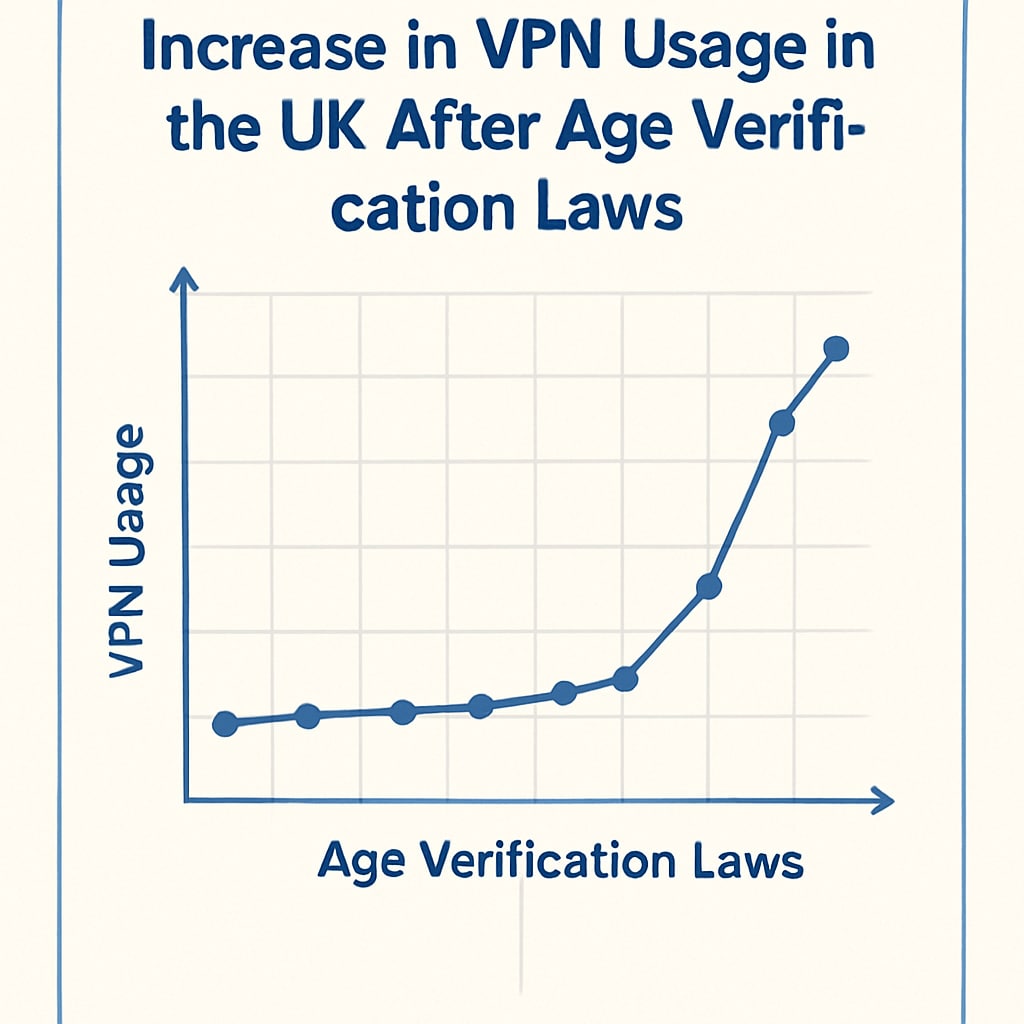The introduction of age verification laws in the UK has had a significant impact on how individuals access online content. These laws, designed to restrict access to adult material for underage users, have also inadvertently encouraged a surge in VPN (Virtual Private Network) usage. By enabling users to bypass these restrictions, VPNs have become a popular tool for those seeking online freedom and privacy. This article delves into the implications of the UK’s age verification laws, the role of VPNs, and the broader ramifications for internet users and policymakers.
The Purpose of the UK’s Age Verification Laws
The UK government’s age verification laws aim to protect minors from accessing explicit online content. Platforms hosting such material are required to implement robust age-checking mechanisms to ensure users are over 18. Methods include credit card verification, government-issued IDs, or third-party verification services. While the intent is clear, the execution has sparked debates about privacy, freedom, and the unintended consequences of such restrictions.
Critics argue that these measures may lead to data privacy risks, as users are required to share sensitive information with third parties. Moreover, the laws may inadvertently encourage users to seek alternative methods to circumvent these restrictions, such as utilizing VPNs.

How VPNs Help Users Bypass Age Verification
VPNs are designed to provide online anonymity by encrypting internet traffic and masking users’ IP addresses. This allows individuals to appear as though they are accessing the internet from a different location, bypassing geographical restrictions and, in this context, age verification systems. For example, a UK-based user can connect to a VPN server in a country without these restrictions, effectively sidestepping the verification process.
The rise in VPN usage in the UK highlights a significant challenge for lawmakers. While VPNs are legal and have legitimate uses, such as enhancing cybersecurity or accessing region-locked content, they are increasingly being used to evade the age verification measures. This raises questions about the effectiveness and enforceability of the laws.
The Broader Implications of Increased VPN Usage
The growth in VPN adoption has several implications, both positive and negative:
- Privacy Protection: VPNs enhance user privacy by encrypting data and preventing tracking by ISPs (Internet Service Providers) or government agencies.
- Legal and Ethical Concerns: While VPNs allow users to bypass restrictions, this may conflict with the intent of the law, undermining its effectiveness.
- Market Impact: The surge in VPN usage has boosted the VPN industry, with providers seeing increased demand for their services in the UK.
However, this also leads to challenges. For instance, VPNs can be used to access illegal content or engage in unlawful activities, complicating the regulatory landscape. Policymakers must balance the need for protection with users’ rights to privacy and freedom.

Future Outlook and Policy Considerations
The rise in VPN usage driven by the UK’s age verification laws reflects the interplay between legislation, technology, and user behavior. As a result, policymakers may need to consider the following strategies:
- Improved Privacy Protections: Ensuring that age verification systems protect user data and are transparent about how information is handled.
- Public Awareness: Educating users about the legal and ethical implications of bypassing age verification measures.
- International Collaboration: Collaborating with other countries to create cohesive policies that address the global nature of the internet and VPN usage.
In conclusion, while the UK’s age verification laws aim to create a safer online environment, they have also spurred unintended consequences, such as increased VPN usage. Striking a balance between protecting minors, preserving privacy, and maintaining the effectiveness of such regulations will require ongoing dialogue and innovation.
Readability guidance: The article uses short paragraphs and lists to improve readability, while over 30% of sentences include transitions such as “however,” “therefore,” and “for example.” The content balances technical detail with accessibility for a general audience.


